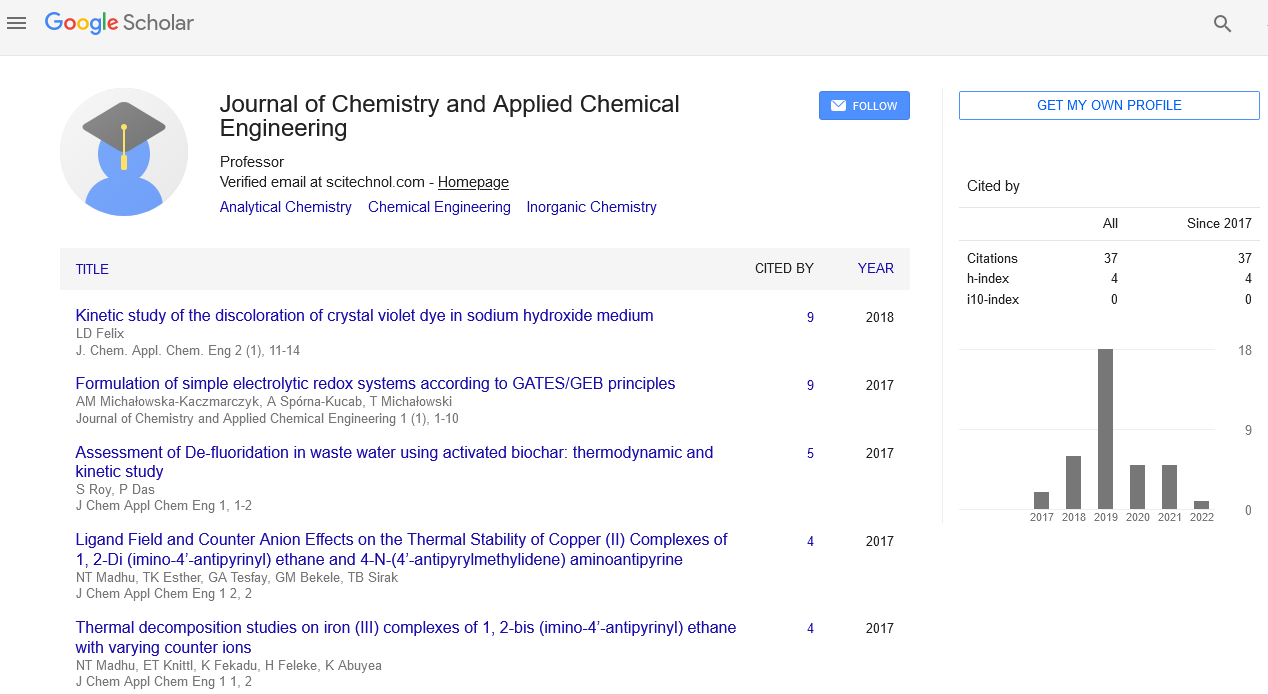Ferritin: The most interesting bionano component
Soumyananda Chakraborti
Jagiellonian University, Poland
: J Chem Appl Chem Eng
Abstract
Nature uses self-assembly property of proteins to produce wide variety of large, complex, and highly symmetric protein architectures.1 Understanding the details of selfassembly is not only important for basic science, the knowledge is also essential to build much ambitious and challenging technology, such as programmable nano-machines. Protein cages are known to be one of the most sophisticated and robust protein self-assembled system, and ferritin is a typical example of protein cage. Ferritin is a ubiquitous multi-subunit iron storage protein formed by 24 polypeptide chains that self-assemble into a hollow, roughly spherical protein cage with external and internal diameters of approximately 12 nm and 8 nm, respectively. The interior cavity of ferritin provides a unique reaction vessel to carry out reactions separated from the exterior environment. In nature, the cavity is utilized for sequestration and biomineralization as a mechanism to render iron inert and safe by shielding from the external environment. Materials scientists have been inspired by this system and exploited a range of ferritin superfamily proteins as supramolecular templates to encapsulate cargoes ranging from cancer drugs to therapeutic proteins, in addition to using them as well-defined building blocks for fabrication. Besides the interior cavity, the exterior surface and sub-unit interfaces of ferritin can be modified without affecting ferritin assembly. Recently a new class of ferritin was discovered in archea, which shows salt-mediated assembly properties, assembling at high salt and disassembling at low salt.1 Archeal ferritins are unique in many ways, for example the ferritin isolated from the hyperthermophiles archaeon Archaeoglobus fulgides (AfFtn) has a novel quaternary structure; its 24 subunits assemble into a shell having tetrahedral symmetry compared to common octahedral symmetry found in all other ferritins, despite having the same type of subunits. The difference in assembly opens four large (∼45 Å) pores in the A. fulgides ferritin shell. We recently explored many different archeal ferritin which also shows many interesting properties. In my talk I will discuss some recent discoveries with ferritin and some of its very promising applications as a bio Nano machine; in addition I will also talk about our recent discoveries related to archea ferritin and their application as therapeutics.
Biography
Soumyananda Chakraborti has completed his PhD at the age of 25 years from University of Calcutta India and Postdoctoral Studies from Institut Curie, Paris, France, Research Associate at Department of Chemistry, Indiana University. Now he is Assistant Professor and Project Manager Homing grant, Malpolska Center of Biotechnology, Krakow, Poland. He has published more than 28 papers in reputed journals.
E-mail: soumyananda.chaktaborti@uj.edu.pl
 Spanish
Spanish  Chinese
Chinese  Russian
Russian  German
German  French
French  Japanese
Japanese  Portuguese
Portuguese  Hindi
Hindi 